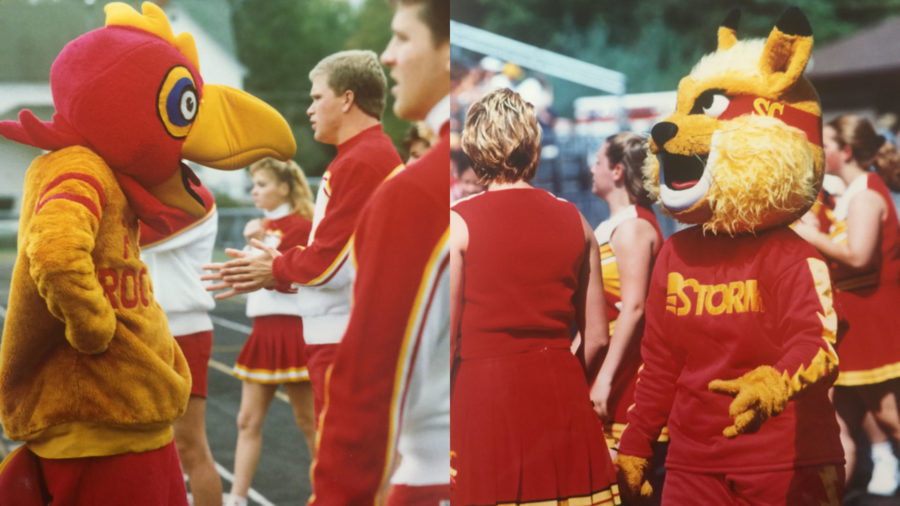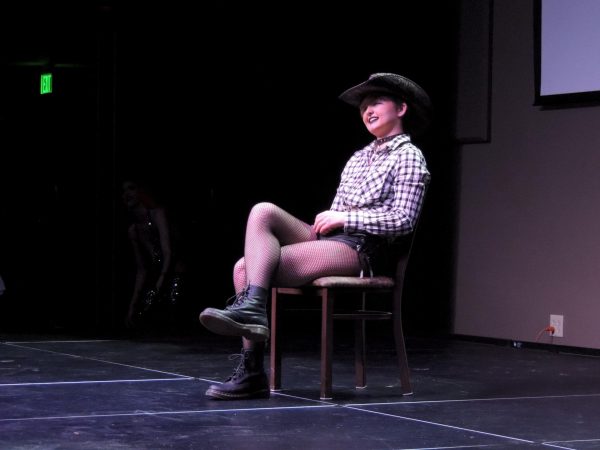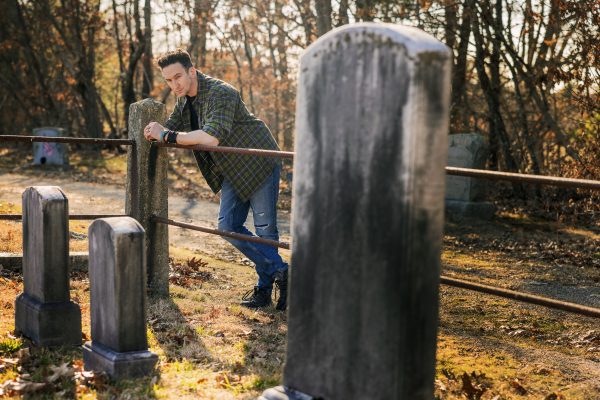How Simpson became the Storm
February 3, 2016
Simpson is famous for its long-standing traditions, such as All College Sing, Lessons and Carols and the Simpson seal.
The various traditions that students hold dear show the community how meaningful Simpson means to them, and Simpson’s mascot is no exception.
The most recent and beloved mascot is the Simpson Storm.
Although it’s not a physical mascot, the indistinguishable gray storm cloud with a lightning bolt running through it is mascot enough.
Before the Storm, Simpson had four past mascots.
What were the reasons for changing the mascots so many times?
Simpson archivist Cyd Dyer told The Simpsonian about the college’s special history.
In 1910, Simpson’s athletic teams were known as the Red and Gold. In the 1930s, that name was shortened to Redmen and a mascot — a red Native-American man, followed.
Native-American mascots were popular in the 1930s, although in this day and age, they would seem inappropriate.
Along with the Native-American theme of the 1930s and 1940s came the Tomahawk award, which is handed out to the winner of homecoming, and the old versions of the homecoming King and Queen: Homecoming Princess, Brave and a faculty member, the Big Chief.
All of these were meant to honor Simpson’s Native-American lore, but in the mid-1960s, the nation began a large debate over the use of Native-American mascots, and 15 years later, Simpson got on board with the movement.
The transition from mascot to mascot was awkward and difficult.
Simpson needed a mascot that not only reflected Simpson and what it stood for, but also something that the community would love.
In 1985, Rowdy Rooster, a red rooster with a gold Simpson sweater, surfaced.
Another mascot, the Thundercat, a yellow cat with a red Simpson sweater, also came about later.
“The two mascots really lived at the same time,” said Cyd Dyer, the college archivist. “I came to Simpson in 1978, and for some time, they were both our mascots. It was very confusing.”
Some students speculated the Thundercats decision was made because of the popularity of the 1980s television series of the same name.. Whatever the reason, neither mascot latched on like Simpson faculty hoped they would, and the decision to change the mascot once again was made.
In February 1992, a ballot was handed out to students and faculty that contained 27 names for potential mascots, including Crusaders, Maples, Red Devils, Red Raiders, Saints, Sodbuster, Zenith, Wolf Pack and more.
Neither Storm nor Red and Gold were on the ballot.
Names were moved from a “qualifying” list to a “non-qualifying” list due to reasons such as gender-specific names, no connection to the school or names that other schools in Iowa had already claimed.
After a few meetings, the options came down to Owls, Red and Gold and Storm.
Then-Simpson President Stephen Jennings took advice from the 22-person committee and eventually decided on Storm.
In April of 1992, Simpson’s new mascot, Stormy, a superhero with a lightning bolt on his chest, appeared. The superhero was quickly changed to a storm cloud, and Simpson’s famous Storm was born.
The reason for the Simpson Storm is unclear, but it is thought to be because of the building, Old Bluebird,” which no longer stands on campus.
Old Bluebird was the first building that was erected on Simpson’s campus.
Although it no longer stands today, a rock with a plaque of memory can be found across the way from College Hall.
The reason for the name because of the building’s blue-gray color, which quickly gave way to the nickname.
So what does Storm have to do with Old Bluebird? It is common knowledge among Iowans that summer storms are anything but friendly.
Shortly after it was built, a strong storm blew off the roof and part of the north wall of Old Bluebird, and as the book of Simpson’s history states, “After every storm, Simpson comes back stronger.”
When asked what her personal thoughts on the Storm were, Cyd Dyer laughed, “Because it’s better than Owls!”
Simpson Storm, according to students, shows strength and resilience continues to be a source of pride and love for years to come.











